 by "ttyymmnn" (ttyymmnn)
by "ttyymmnn" (ttyymmnn)
Published 09/19/2017 at 12:35
 by "ttyymmnn" (ttyymmnn)
by "ttyymmnn" (ttyymmnn)
Published 09/19/2017 at 12:35
Tags: planelopnik history
; Planelopnik
STARS: 19
Welcome to This Date in Aviation History , highlighting milestones, important historical events and people in aviation and spaceflight from September 16 through September 19.
!!! UNKNOWN CONTENT TYPE !!!
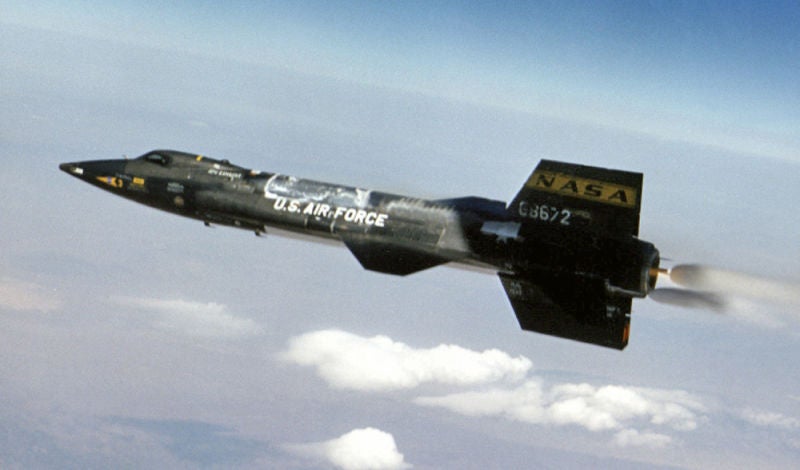
September 17, 1959 – The first powered flight of the North American X-15. The decades of the 1950s and 1960s were an extraordinary time in the history of aviation. Following the adoption of the turbojet engine late in WWII, the race was on to develop aircraft that could fly ever higher and faster, even to the edges of space. And enormous Cold War defense budgets that funded research into aviation, along with the ongoing Space Race between the United States and the Soviet Union, meant that money for research and development was always in good supply. The X-15 was part of a long lineage of experimental aircraft, known collectively as the X planes , that were developed to explore, test and evaluate cutting edge theories about aircraft design and propulsion, and push against the edges of the flight envelope , beginning with the Bell X-1 , which broke the sound barrier for the first time in 1947. In 1952, the National Advisory Committee for Aeronautics (NACA, the predecessor of NASA ), started to investigate the possibilities of space flight and, by 1954, they set forth the guidelines for an aircraft that could investigate flight at not just supersonic speed, but at hypersonic speeds (above Mach 5), and one that would go to the limits of our atmosphere. NACA selected North American Aviation and a team led by Chief Project Engineer Charles Feltz to design the exotic plane, one that looked more like a spacecraft than an aircraft. And indeed, it was intended to fly in both regimes, using traditional flight control surfaces for flight in the atmosphere and reaction controls in the form of hydrogen peroxide thrust rockets for control in the thin air outside the atmosphere. Power for the X-15 came from a single liquid fuel Reaction Motors XLR99 rocket that produced over 70,000 pounds of thrust, though the early flights were carried out using two less powerful rocket motors.
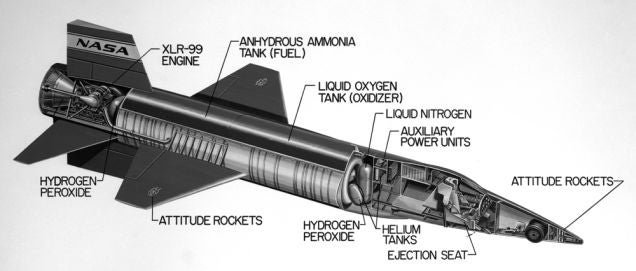
On its first powered flight, North American test pilot Scott Crossfield flew the X-15 to a rather pedestrian speed (for the X-15) of 2,242 mph, about Mach 3, at an altitude of around 16,000 feet. But as fast as that flight was, it was only a precursor of more remarkable flights to come. Later test flights went ever faster, eventually reaching a speed of 4,519 mph (7,273 kmh) on October 3, 1967, a record that still stands for a manned aircraft. But it wasn’t all about speed. The X-15 was also about altitude, and reaching the edge of space. Carried aloft by a Boeing NB-52A Superfortress mother ship, X-15s were released and the rocket ignited. In arcing flights that started over Utah and ended at Edwards Air Force Base in California, 13 of the 199 test flights took their pilots to an altitude between 50-60 miles, the entry altitude to space set by the USAF. Two flights, Flight 90 and 91, flown by Joseph Walker , reached 66 and 67 miles. Pilots who made these flights were awarded their Astronaut wings (the Fédération Aéronautique Internationale Sporting Code sets the required altitude to be considered an astronaut as 100 km, about 62 miles). The series of flights made by the X-15 collected reams of data on hypersonic flight, as well as data that would be used for future aircraft and spacecraft design. A total of three X-15s were built during the program, and two survive. One is on display at the National Air and Space Museum in Washington, DC, and the other resides at the National Museum of the United States Air Force in Dayton, Ohio. (NASA photo and illustration)
!!! UNKNOWN CONTENT TYPE !!!
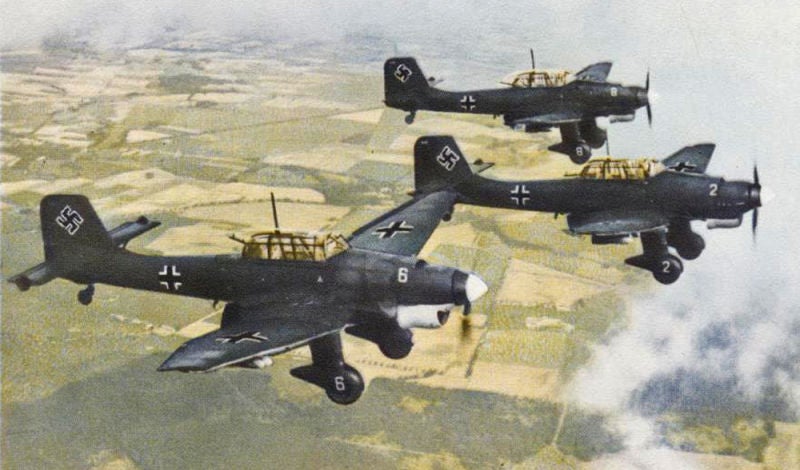
September 17, 1935 – The first flight of the Junkers Ju 87.
In the early stages of WWII, the German
Blitzkrieg
, or “lightning warfare,” was practically unstoppable as it stormed across Europe. Concentrations of armored or motorized infantry and tanks struck against Poland, France and the Low Countries hard and fast, but one of the main components of the Blitzkrieg strategy was the use of combined arms tactics, with aircraft in close air support of the infantry. The plane that came to symbolize Blitzkrieg more than any other was the Junkers Ju 87 Stuka. Development of a dedicated ground attack aircraft began as early as 1928 but, once
Adolf Hitler
came to power in 1933, the project became one of great importance, and development was spearheaded by
Ernst Udet
, a WWI fighter ace and the eventual Director-General of Equipment for the Luftwaffe. Work on the Ju 87 began in 1933 as part of Germany’s
Sturzbomber-Programm
(the name
Stuka
is derived from
Sturzkampfflugzeug
, or “diving warplane”), and the aircraft was originally powered by a British
Rolls-Royce Kestrel
V-12 engine and featured a twin tail to give the rear defensive gunner a clearer field of fire. But the weakly constructed tail broke apart during a test flight, killing the pilots, and designers reverted to a single vertical stabilizer.
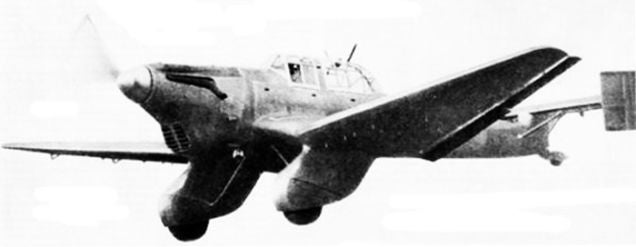
The distinctive inverted gull wings were adopted to provide clearance for the landing gear and to improve visibility for the pilot, and automatic pull-up dive brakes allowed the aircraft to recover from a diving attack even if the pilot lost consciousness from high G forces. Fixed, spatted landing gear, which hearkened back to an earlier era of aviation, added strength to the Stuka, and Jericho-Trompete wailing sirens were fitted to the struts as instruments of propaganda meant to strike fear into the Stuka’s targets. For the production aircraft, the original Rolls-Royce engine was swapped for one of German build, a Junkers Jumo 211 inverted V12, the same engine fitted to the Junkers Ju 88 and Heinkel He 111 . Stukas first saw service in support of the General Francisco Franco’s Nationalists during the Spanish Civil War of 1936, and the dive bomber was instrumental in early German victories of WWII in 1941-19142. It worked closely with tanks and infantry to spearhead the invasion of Poland in September 1939, was instrumental in the conquering of northern continental Europe, and was also particularly effective against shipping. But in spite of its prowess as a dive bomber, the Stuka suffered from low speed and poor maneuverability, making it easy prey for faster, more nimble Allied fighters. With a maximum speed of only about 240 mph, the Stuka was 100 mph slower than the Hawker Hurricane . As the war progressed, Stuka raids required fighter escort, and when Germany eventually lost air superiority over Europe, the Stuka was rendered much less effective. The bulk of the ground attack missions were taken over by attack variants of the Focke-Wulf Fw 190 , but the Ju 87 soldiered on and served until the end of the war. The Stuka was retired at the end of the war and, of the more than 6,500 that were produced, only two remain. One is on display at the Museum of Science and Industry in Chicago, and the other resides at the Royal Air Force Museum in London. (Photo authors unknown)
!!! UNKNOWN CONTENT TYPE !!!

September 18, 1947 – The US Air Force becomes an independent branch of the US military. The US Air Force traces it origins all the way back to August 1, 1907 with the creation of the Aeronautical Division , a part of the US Army Signal Corps . At first, they only flew balloons and dirigibles for observation, but in 1909 the Army accepted delivery of their first airplane, the Wright Military Flyer , and the 1st Aero Squadron was formed in December 1913. The oldest aviation unit in the US military, the 1st Aero Squadron saw its first action in 1916 during the Pancho Villa Expedition , when US troops crossed into Mexico to pursue the Mexican revolutionary Pancho Villa . There, the squadron performed reconnaissance and communication duties for the soldiers on the ground. (The 1st Aero Squadron is still active today as the 1st Reconnaissance Squadron stationed at Beale AFB in California.) However, the 1st Aero Squadron faced significant difficulties with the poor construction of their airplanes, demonstrating that American aviation production was inadequate for the demands of military service and the looming World War. Thus, during WWI, most American flyers were sent overseas to fly planes manufactured by their European allies. To address this deficiency, President Woodrow Wilson created the US Army Air Service (AAS) on May 24, 1918 and placed it under the War Department. Following the war, there were calls to form a separate air force, most notably from Billy Mitchell , a staunch and often abrasive advocate for air power to the point that he faced a court martial for insubordination. Despite the advocacy of Mitchell, the AAS remained part of the US Army. The National Defense Act of 1920 gave the Air Service the status of “combatant arm of the line” in the US Army, but debates about the role of air power in the US military continued, and in what amounted to a simple rebranding, the Air Service was renamed the US Army Air Corps (USAAC) in 1926. However, it remained firmly attached to the US Army and, with no war to fight, it was limited in its growth and modernization and fell victim to shrinking peacetime budgets. When war in Europe broke out in 1939, the Air Corps had only 26,000 personnel and fewer than 2,ooo airplanes. The Japanese attack on Pearl Harbor changed that forever. With the US drawn into WWII, the War Department created the US Army Air Forces (USAAF) on June 20, 1941. Though it was still an element of the Army’s combat arms, it was now one of three functionally autonomous forces, along with the Army Ground Forces and the Services of Supply. With America now fighting a war overseas in two theaters, the USAAF saw unprecedented growth in men and technology, soon amassing one of the greatest aerial armadas ever assembled. By the end of the war in 1945, the USAAF had 2.4 million personnel and 80,000 aircraft. During the war, 68,000 US airmen died, second only to the US Army in enlisted casualties. Having grown to such a size, and having enjoyed a measure of autonomy during the war, it was time for the Air Force to be placed on an equal footing with the other major branches of the US Armed Services.

On July 16, 1947, President Harry S Truman signed the National Security Act of 1947 , which mandated a sweeping reorganization of US military structure and dictated the formation of the Department of the Air Force , along with the National Security Council , the Central Intelligence Agency , and the Joint Chiefs of Staff . The Air Force officially became active on September 18, 1947 when Stuart Symington was sworn in as the first Secretary of the Air Force . General Carl A. Spaatz , former commander of Strategic Air Forces in Europe, was named its first Chief of Staff . Throughout the Cold War, the Korean War, the Vietnam War, and through all the conflicts since, the US Air Force has remained at the forefront of technological advancement and readiness, and is arguably the most powerful and capable arm of military aviation in the world today. (Special thanks to Jcarr for the Air Force photo montage; all photos via US Air Force)
!!! UNKNOWN CONTENT TYPE !!!
!!! UNKNOWN CONTENT TYPE !!!
!!! UNKNOWN CONTENT TYPE !!!

September 16, 2013 – The first flight of the Bombardier CSeries (CS100), a narrow-body twin-engine medium-range regional airliner manufactured by Bombardier Aerospace of Canada. Following their unsuccessful takeover of Fokker in 1996, Bombardier considered a new regional jet, but instead chose to enlarge their existing successful line of CRJ regional jets. With the launch of the Embraer E-Jet line, as well as similar offerings from Airbus and Boeing , Bombardier revisited the idea and developed their first regional jet with 5-across seating and engines in pods under the wing rather than at the rear of the aircraft. After a lengthy test program, the first CS100 was delivered to Swiss Global Air Lines in June 2016, with Bombardier having firm orders for 123 more CS100 airliners along with 235 of the larger CS300. (Photo by Alexandre Gouget via Wikimedia Commons )
!!! UNKNOWN CONTENT TYPE !!!

September 16, 2011– A modified North American P-51D Mustang crashes into the grandstands at the Reno Air Races. Seventy-four-year-old pilot Jimmy Leeward was piloting his highly modified North American P-51D Mustang (NX79111) around pylon number 8 at the Reno Air Races when the aircraft suddenly pitched up violently and plunged into the grandstands, killing Leeward along with 10 spectators. During the race, Leeward reached a top speed of 530 mph, and investigators later determined that the trim tab on the left elevator began to flutter and then break off, leading to the loss of control. The sudden departure from controlled flight exerted 17Gs on the pilot, which would have rendered him unable to move and likely caused him to lose consciousness. The breakage was traced to the use of locknuts being reused that were only intended for a single use. The crash was the fourth-deadliest accident in US air show history. (NTSB video capture)
!!! UNKNOWN CONTENT TYPE !!!

September 16, 1959 – The first flight of the North American Sabreliner,
a mid-sized business jet developed by
North American Aviation
for both the military and civilian market. Development began as part of the US Air Force’s Utility Trainer Experimental (UTX) program to find an aircraft that could function both as a utility transport and a combat readiness trainer. The name Sabreliner was chosen due to the resemblance of the tail and wings to the
North American F-86 Sabre
fighter. The US military adopted the Sabreliner as the T-39, while the civilian version was originally marketed as the Series 40, though subsequent variants saw the 60, 70, 75 and 80. The Navy also adopted the T-39 for radar operator training. More than 800 Sabreliners were produced from 1959-1982.
(US Air Force photo)
!!! UNKNOWN CONTENT TYPE !!!
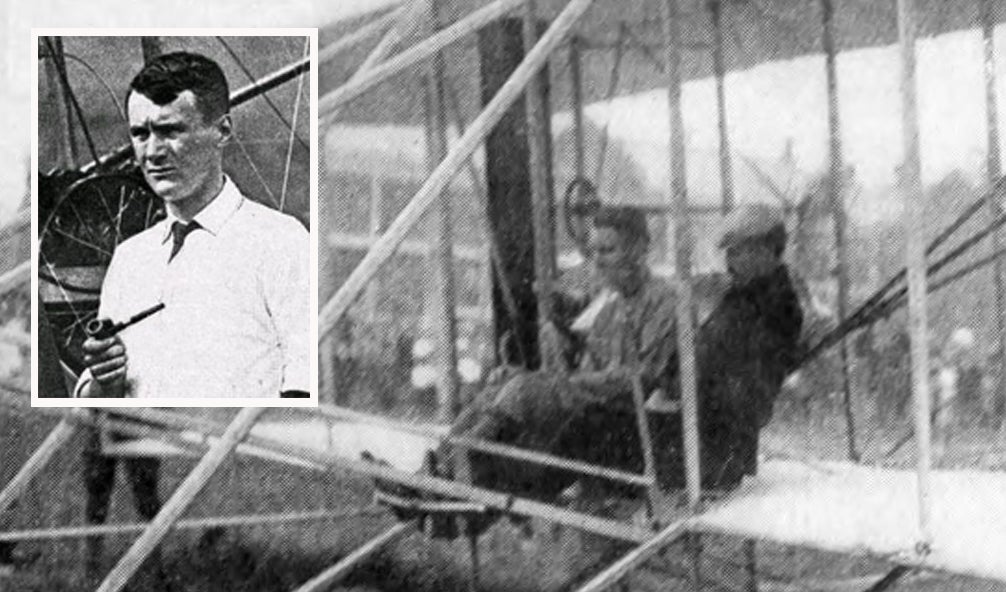
September 17, 1908 – The death of Thomas Selfridge. Selfridge was born on February 8, 1882 undeserved in the Aeronautical Division of the US Army Signal Corps after his graduation from the United States Military Academy in 1903. As part of the effort to gain interest from the US Army in airplanes, Orville Wright traveled to Fort Myer near Washington, DC to demonstrate the Wright Flyer to officials from the Army. While Orville piloted the Flyer around the base, Selfridge rode as a passenger while the plane reached an altitude of 150 feet. On the fifth circuit, the right propeller broke, with pieces of the damaged propeller damaging the struts and wiring of the Flyer. Orville managed to glide the Flyer to the ground, but landed nose first. Orville was severely injured, but Selfridge died of a fracture to the base of his skull, making the the first person in history to die in a plane crash.
!!! UNKNOWN CONTENT TYPE !!!
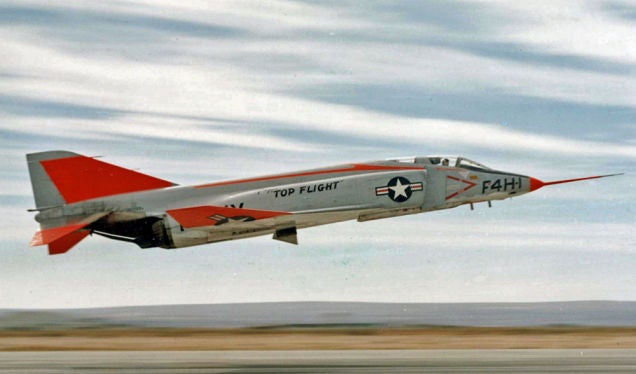
September 18, 1962 – The US Air Force and US Navy adopt the Tri-Service Aircraft Designation System.
Prior to 1962, aircraft of the US Air Force and US Navy and US Marine Corps followed different systems for designating their aircraft, even if the same plane flew for different branches. For example, the
North American Mitchell
bomber was known as the B-25 (B for bomber) in the US Army Air Forces, while the same aircraft in Marine Corps service was known as the PBJ (PB for Patrol Bomber, J being the designation for
North American Aviation
). With the new system, aircraft of the Department of the Navy were redesignated, and all aircraft would follow the Air Force system, with a prefix denoting the aircraft’s main mission: F for fighter, A for attack, B for bomber, X for experimental, and so on. A full explanation of the system can be found
here
.
(Photo author unknown)
!!! UNKNOWN CONTENT TYPE !!!

September 18, 1930 – The death of Ruth Alexander.
Alexander was a pioneering American aviatrix who began her brief flying career in 1929 and, within days of becoming the 65th licensed woman pilot in the US, she set an altitude record for women of 15,718 feet. She was also the second woman in the US to become a licensed glider pilot, and the first woman glider instructor. In July 1930 Alexander set a new world altitude record for both men and women of 26,000 feet, but died just two months later when she crashed into a hillside while piloting her
Barling NB-3
during an attempt at a transcontinental flight.
(San Diego Air and Space Museum photo)
!!! UNKNOWN CONTENT TYPE !!!
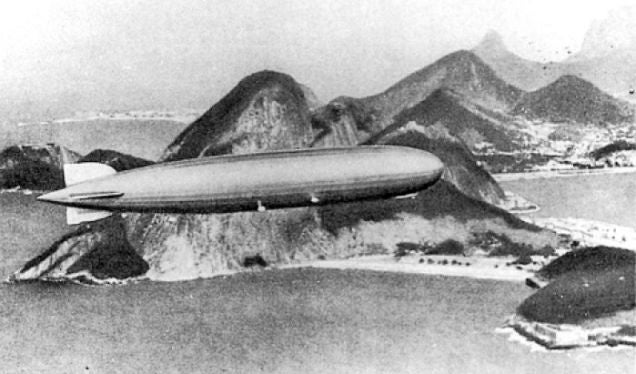
September 18, 1928 – The first flight of the
Graf Zeppelin
(LZ 127),
a German rigid airship and the first airship to provide transatlantic passenger service. The airship was named after Count (
Graf
)
Ferdinand von Zeppelin
, a former general in the German army and the founder of the
Luftschiffbau Zeppelin
. His name has since become synonymous with rigid airships. In its lifetime, LZ 127 made 590 flights covering a total of over 1 million miles, including a circumnavigation of the globe in 1929. Despite its years of service, the
Graf Zeppelin
was scrapped in 1940 so its
duralumin
frame could be used for the production of warplanes.
(Photo author unknown)
!!! UNKNOWN CONTENT TYPE !!!
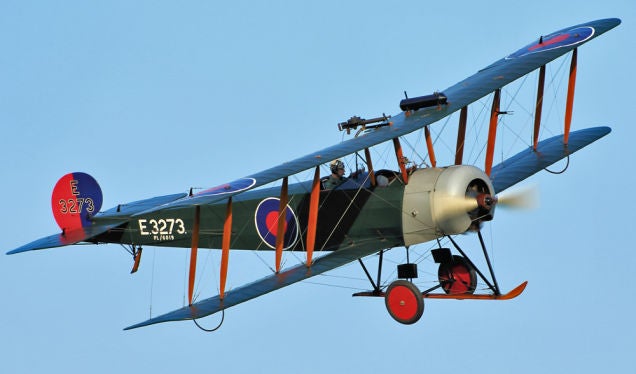
September 18, 1913 – The first flight of the Avro 504,
a biplane fighter of WWI that served both the Royal Flying Corps and the Royal Naval Air Service. The 504 was developed from the earlier
Avro 500
and was powered by a
Gnome Lambda
7-cylinder
rotary
engine to a top speed of 90 mph. Over 10,000 were produced from 1913-1930, and it holds the distinction of being the most-produced aircraft of any kind in WWI. Of all wood construction, the 504 was soon rendered obsolete by more modern fighters, and was used primarily as a trainer. However, it remained the standard RAF trainer after the war, and many entered the civilian market. A number have survived 100 years after their production, and at least two remain airworthy.
(Photo by Airwolfhound via
Wikimedia Commons
)
!!! UNKNOWN CONTENT TYPE !!!

September 19, 1980 – A Titan II intercontinental ballistic missile explodes in its silo in Damascus, Arkansas. While performing routine maintenance on the Titan II missile, a member of the two-man propellant transfer system (PTS) team dropped an 8-pound socket which fell 80 feet and struck the missile, piercing the first-stage fuel tank. The puncture caused a leak of the aerozine 50 fuel, which would ignite if it came in contact with the nitrogen tetroxide used as an oxidizer. At 3:00 am, the mixture ignited, blowing off the 740-ton silo door and ejecting the second stage, with its W53 warhead , roughly 100 feet outside of the missile complex. The launch station was completely destroyed, but the safety measures on the warhead prevented it from detonation. Senior Airman David Livingston, who had entered the silo prior to the explosion, was killed, and 21 others were severely injured. (Photo author unknown)
!!! UNKNOWN CONTENT TYPE !!!
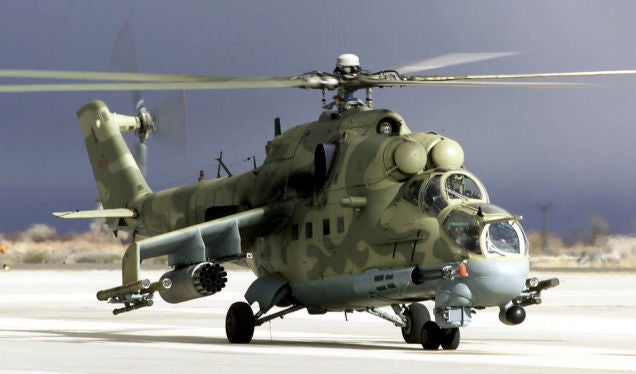
September 19, 1969 – The first flight of the Mil Mi-24,
a large and heavily armed helicopter gunship that is also capable of carrying eight passengers or troops. With armament to provide
close air support
(CAS) and room to transport soldiers, the Mi-24 (NATO reporting name Hind) is essentially a flying infantry fighting vehicle. The Mi-24 was developed from the earlier
Mil Mi-8
, and has a heavily armored fuselage and titanium rotor blades that can withstand hits from 12.7mm rounds. It entered service with the Soviet Union in 1972, and an estimated 2,300 have been produced for the Russian Air Force and more than 30 export countries.
(US Air Force photo)
!!! UNKNOWN CONTENT TYPE !!!

September 19, 1962 – The first flight of the Aero Spacelines Pregnant Guppy,
an oversized cargo aircraft that was developed from the
Boeing 377 Stratocruiser
.
Aero Spacelines
founder and former USAF pilot
John Conroy
conceived the idea, and obtained former Pan Am and BOAC Stratocruisers to construct the giant cargo hauler. The addition of the large cargo area gave the Pregnant Guppy a triple-bubble cross section which could carry 50,000 pounds of cargo, and was used to transport the first and second stages of NASA’s
Titan II
rockets to Cape Canaveral as part of
Project Gemini
. Only one Pregnant Guppy was built, but it was followed by the larger and more capable
Super Guppy
. The original Pregnant Guppy was scrapped in 1979.
(NASA photo)
!!! UNKNOWN CONTENT TYPE !!!
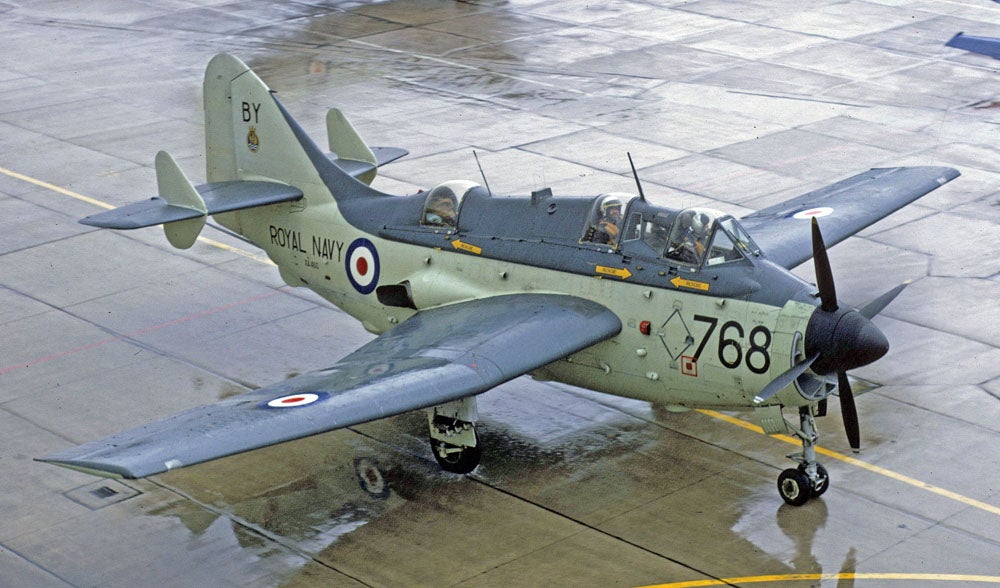
September 19, 1949 – The first flight of the Fairey Gannet. The Gannet arose out of an Admiralty requirement for a turboprop-powered antisubmarine warfare (ASW) and strike aircraft published in 1945. The Gannet had a crew of three and was powered by an Armstrong Siddeley Double Mamba engine, which consisted of two turboprop engines mounted side-by-side and turning a contra-rotating propeller via a gearbox. After the original Gannets entered service in the ASW role, it was further developed into AEW.1 Airborne Early Warning (AEW) variant to replace the Douglas AEW.1 Skyraider and made the first deck landing by a turboprop aircraft on 1950. When the ASW mission was taken over by helicopters, some Gannets transitioned to the carrier onboard delivery role (COD). A total of 348 were built in both AEW and ASW variants, and they served Australia, Germany, Indonesia and the United Kingdom until their retirement in 1978. (Photo by Adrian Balch via the Ulster Aviation Society )
!!! UNKNOWN CONTENT TYPE !!!
!!! UNKNOWN CONTENT TYPE !!!
!!! UNKNOWN CONTENT TYPE !!!
!!! UNKNOWN CONTENT TYPE !!!
!!! UNKNOWN CONTENT TYPE !!!
!!! UNKNOWN CONTENT TYPE !!!
!!! UNKNOWN CONTENT TYPE !!!
If you enjoy these Aviation History posts, please let me know in the comments. And if you missed any of the past articles, you can find them all at Planelopnik History . You can also find more stories about aviation and aviators at Wingspan and Planes You’ve (Probably) Never Heard Of .
!!! UNKNOWN CONTENT TYPE !!!
 "Demon-Xanth knows how to operate a street." (demon-xanth)
"Demon-Xanth knows how to operate a street." (demon-xanth)
09/19/2017 at 12:42, STARS: 1
I still love the X-3, even though it never got the power it was designed for:
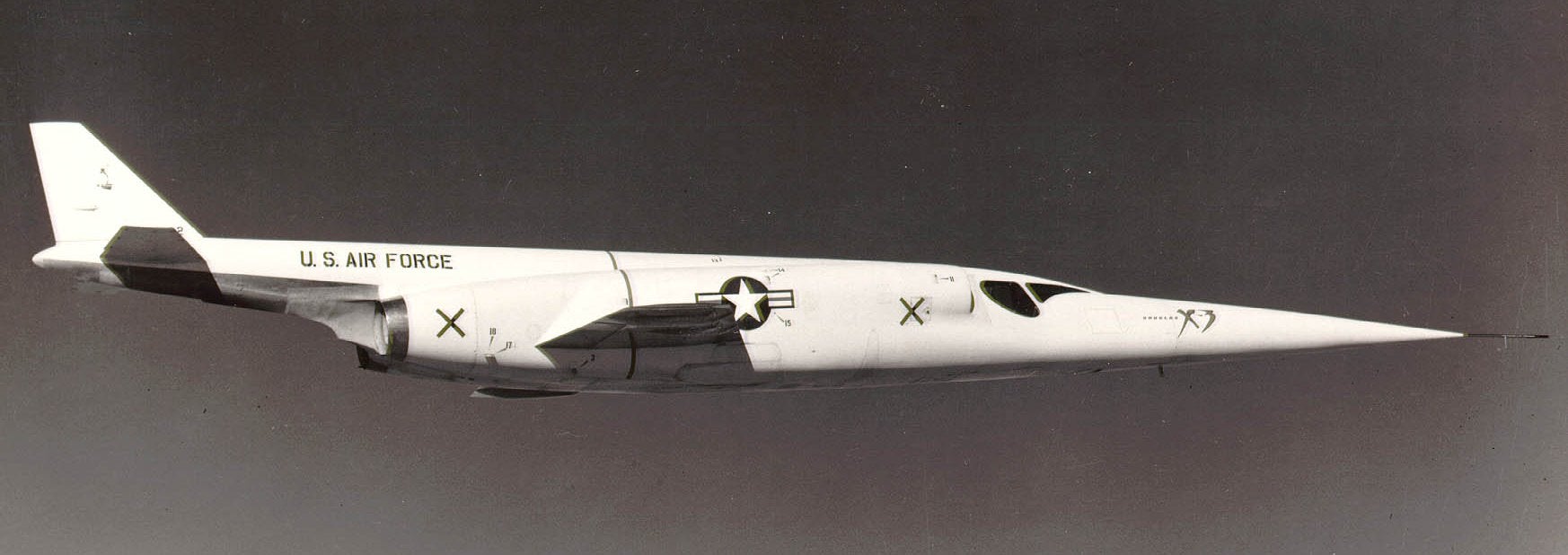
 "ttyymmnn" (ttyymmnn)
"ttyymmnn" (ttyymmnn)
09/19/2017 at 12:46, STARS: 0
I saw that at Dayton this past summer. It’s even smaller than it looks in the photos.
 "Chariotoflove" (chariotoflove)
"Chariotoflove" (chariotoflove)
09/19/2017 at 12:46, STARS: 2
Another great post. Just so you know, as soon as I leave here, I’m going back to the “Where have I see this before?” post and comment to keep it bumped to the top.
 "ttyymmnn" (ttyymmnn)
"ttyymmnn" (ttyymmnn)
09/19/2017 at 12:46, STARS: 1
Do your worst!

09/19/2017 at 13:23, STARS: 2
What might have been:
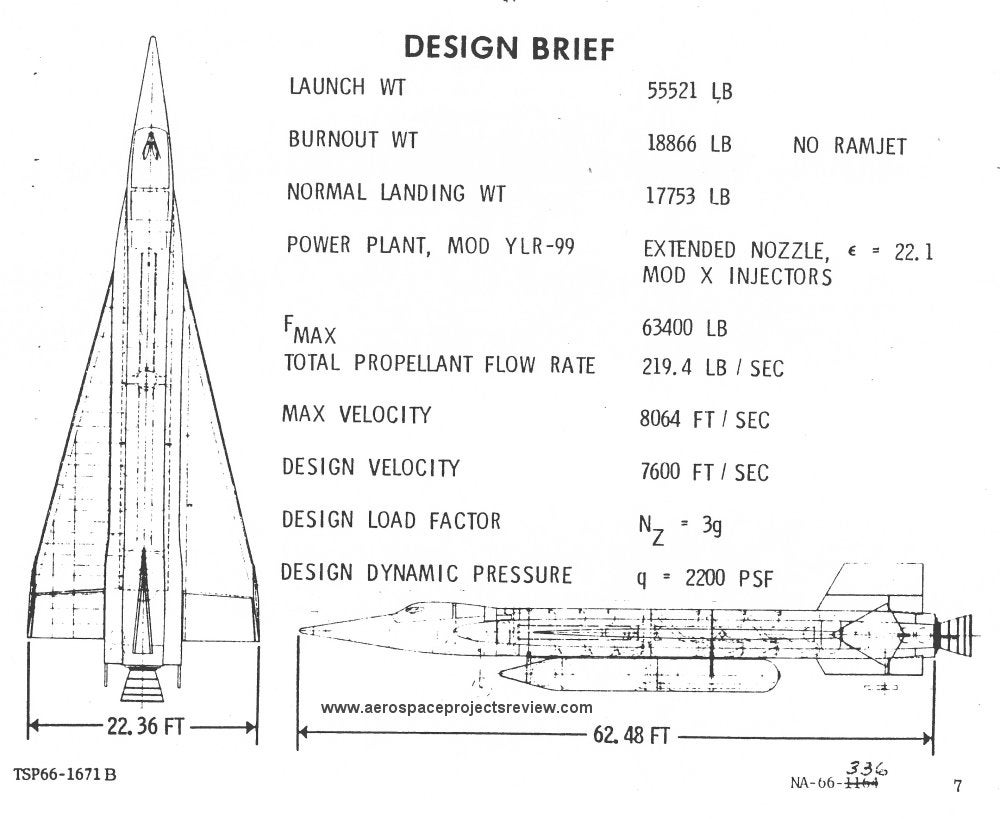
Had it not been destroyed , NAA planed to modify the X-15-3 with a delta wing and an uprated version of the XLR-99 engine, intending to study flight beyond Mach 8.

There were even plans (or at least concept art and models) to launch the X-15 Delta off the back of a modified B-70
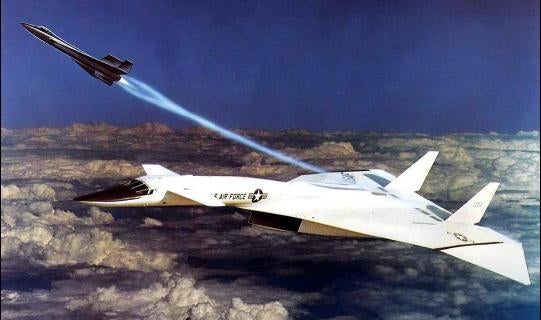

 "ttyymmnn" (ttyymmnn)
"ttyymmnn" (ttyymmnn)
09/19/2017 at 13:28, STARS: 2
That Valkyrie launch idea is bonkers. Though I’m not sure of the exact timetable, you’d think they’d have learned their lesson with the D-21 .

09/19/2017 at 13:55, STARS: 1
I don’t know that they got that far along in their thinking for that to come up, if they ever knew about the M-21 in the first place.

09/19/2017 at 14:01, STARS: 0
I love the Hind, such a brutally straight-forward aircraft. Pretty cool that the one in your pic is flown by the US Army for wargames. Wonder how we got a hold of it.
Spent a lot of time playing Win95 version of the game , too.
!!! UNKNOWN CONTENT TYPE !!!
 "Highlander-Datsuns are Forever" (jamesbowland)
"Highlander-Datsuns are Forever" (jamesbowland)
09/19/2017 at 14:17, STARS: 0
I watched a TV show on the missile silo accident last year. It was fascinating and heart breaking at the same time. They didn’t have a clue what to do. There was a real possibility of triggering the war head.
 "ttyymmnn" (ttyymmnn)
"ttyymmnn" (ttyymmnn)
09/19/2017 at 14:19, STARS: 1
It’s a flying infantry fighting vehicle. I think we got a few of them from former Eastern Bloc nations after the fall of the Soviet Union.
 "ttyymmnn" (ttyymmnn)
"ttyymmnn" (ttyymmnn)
09/19/2017 at 14:26, STARS: 1
We probably watched the same documentary. That’s what gave me the idea to add this event. It’s amazing that such an innocuous thing could have led to a catastrophe. We definitely dodged a bullet.
 "facw" (facw)
"facw" (facw)
09/19/2017 at 19:58, STARS: 1
Interestingly, the Mi-24 originally had very different cockpit glass than the iconic double-bump arrangement:
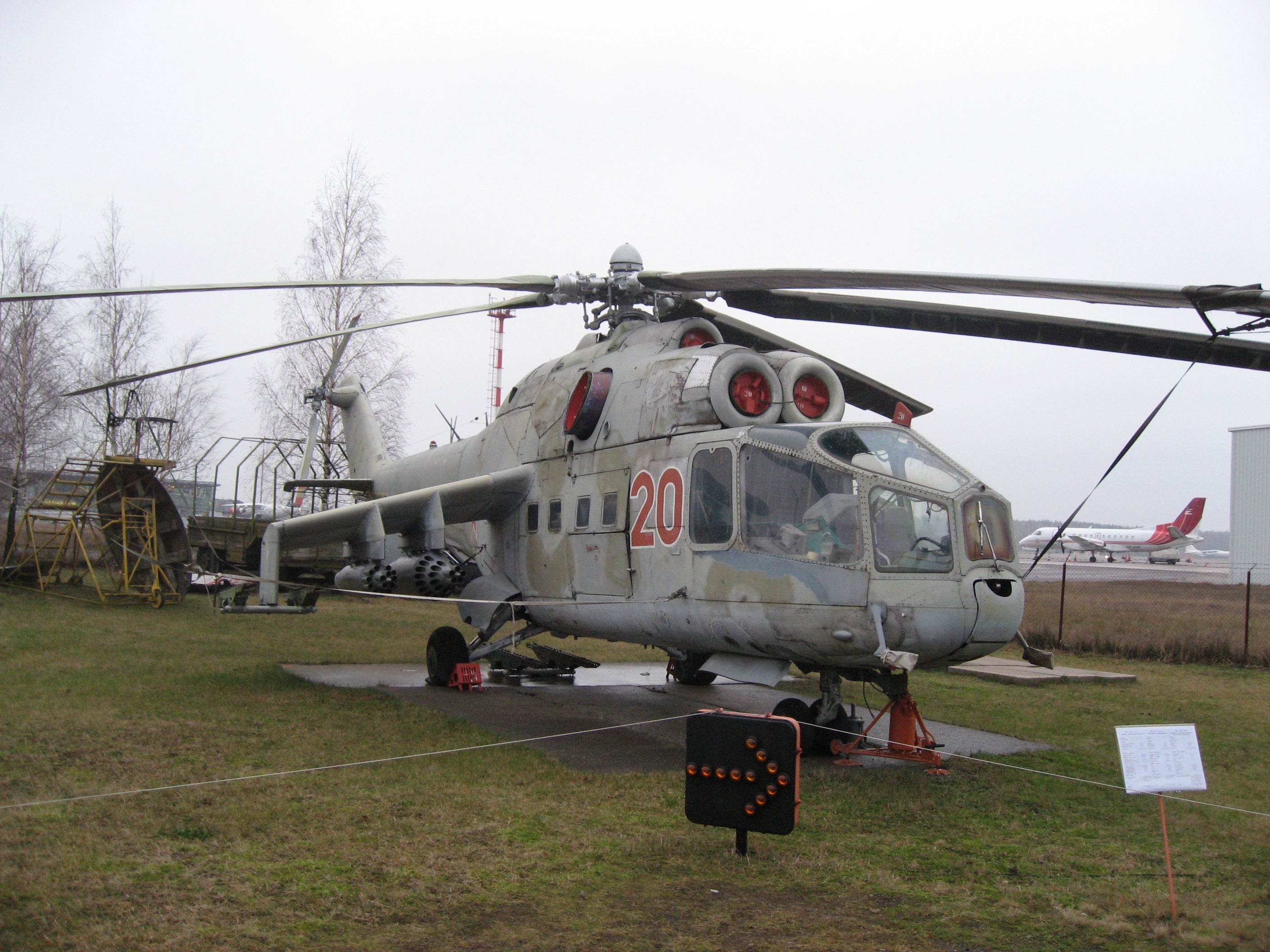
Hadn’t ever seen one like that until this display of questionable physics:

 "ttyymmnn" (ttyymmnn)
"ttyymmnn" (ttyymmnn)
09/19/2017 at 20:48, STARS: 0
Because radar guided air to air torpedo.
 "Fl1ngstam" (Fl1ngstam)
"Fl1ngstam" (Fl1ngstam)
09/20/2017 at 09:11, STARS: 0
The Stuka was retired at the end of the war
This may be a redundant statement...
 "ttyymmnn" (ttyymmnn)
"ttyymmnn" (ttyymmnn)
09/20/2017 at 09:35, STARS: 0
Interesting observation, in that it forces one to deal with the passive voice of the sentence. Retired by whom? I’m not sure the Luftwaffe had much of a say in the matter.
When writing so much, it’s easy to slip into formulaic constructions. Perhaps it would be better to say that the Stuka was no longer flown after the war. Those of them that were left....
 "Fl1ngstam" (Fl1ngstam)
"Fl1ngstam" (Fl1ngstam)
09/20/2017 at 09:44, STARS: 0
I guess it could be worth mentioning, in contrast to the various pieces of German war machinery which were commandeered by arriving Allied forces, some of which were re-purposed (e.g. V2 rockets). I suppose that the Stuka wasn’t high on any opposing forces’ wish list...